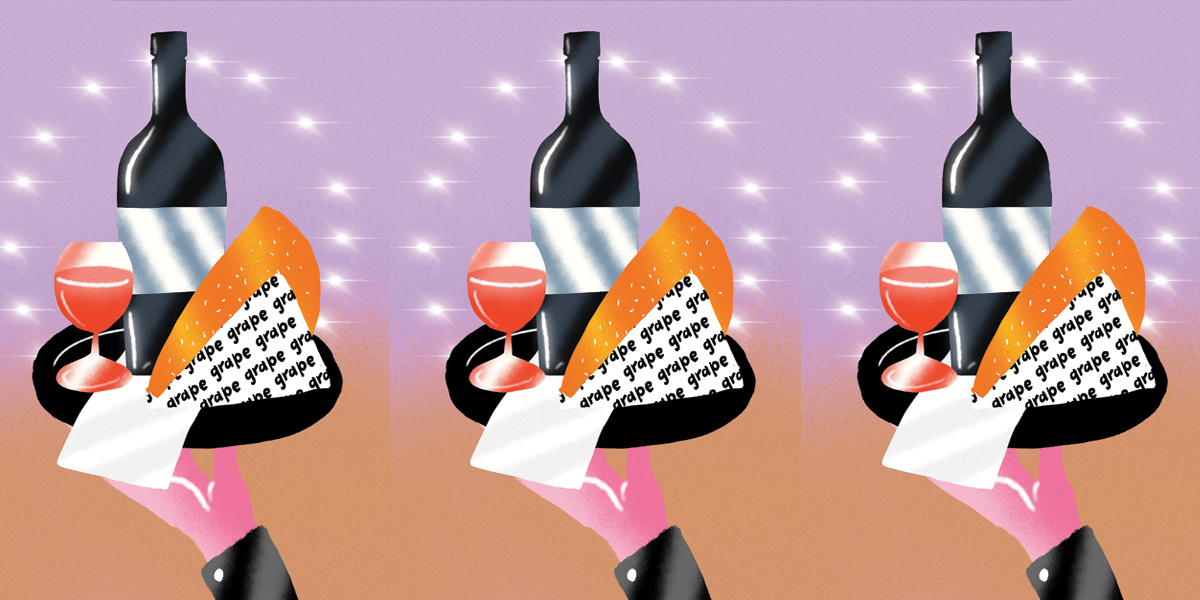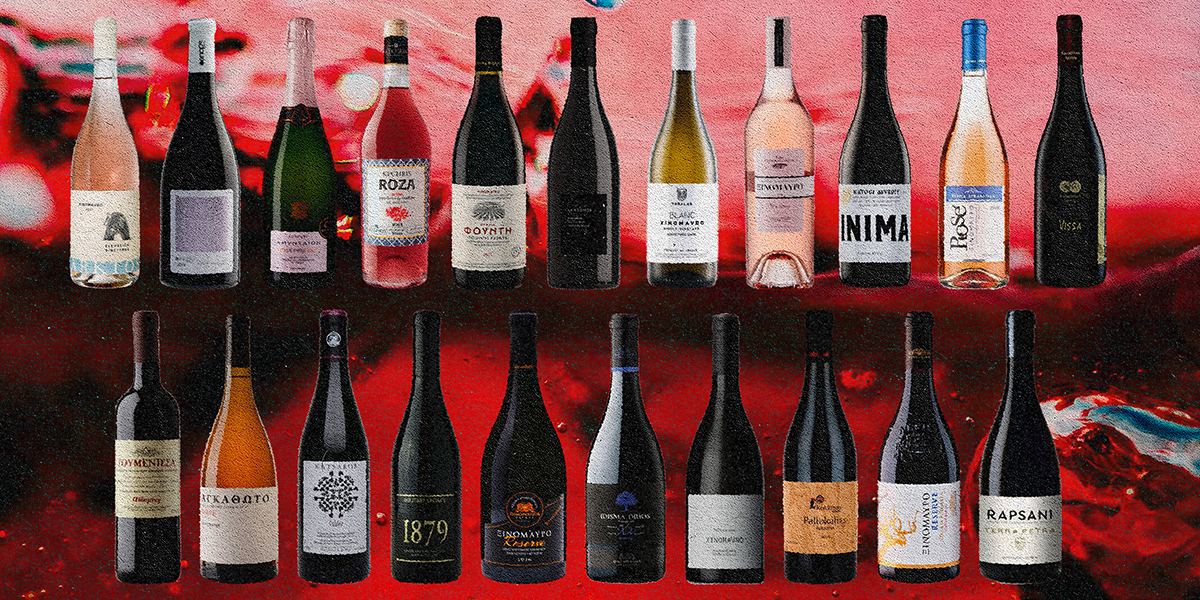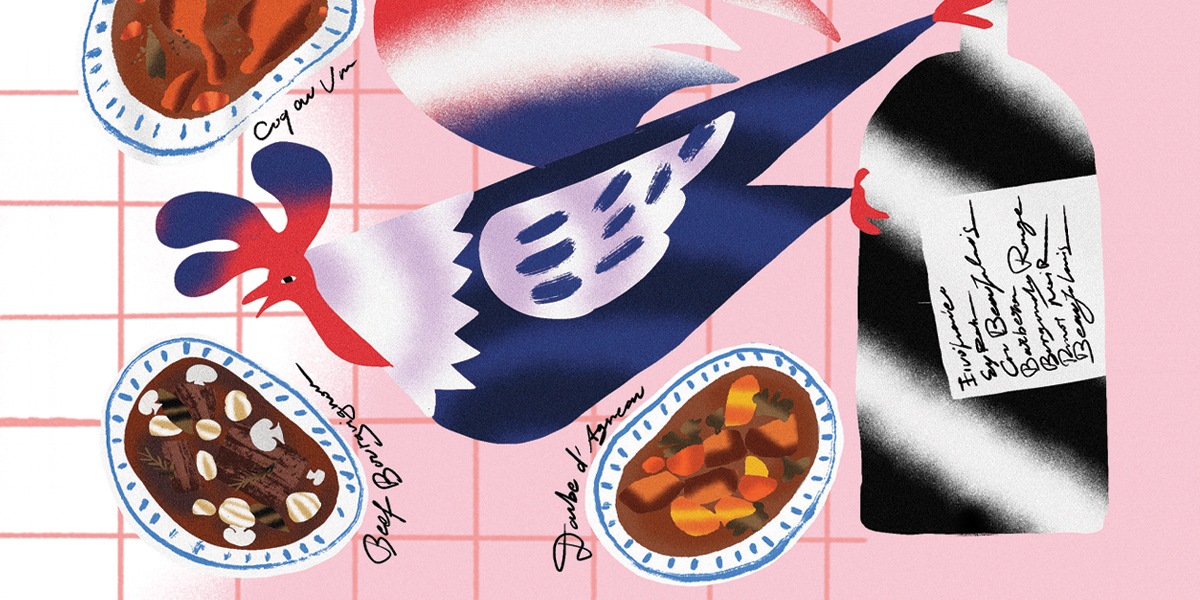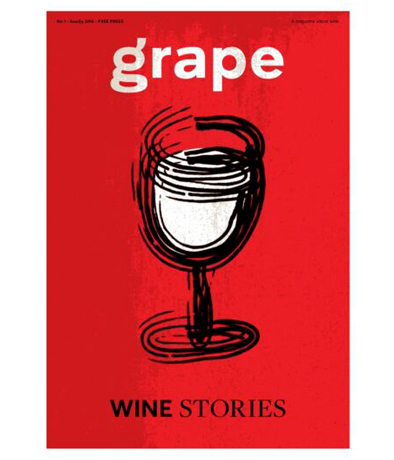
The term “Vassaltis” is used for the rock that forms from the cooling of basaltic lava following a volcanic eruption, and it’s also the name of Yannis Valambous’ winery.
This distinctive black stone, a symbol of Santorini, also dominates his winery’s interior spaces, which differ significantly from what you’ll find at the other wineries on the island. The minimalist, modern aesthetic fits perfectly with the natural environment around it, and it gives it a fresh new feel, too. The 2010 Greek financial crisis may strike one as an incongruous time to begin a massive venture. And yet it was exactly this event that prompted Yannis Valambous to give up his life as a successful economist in London and return to Greece. His love of wine drew him back to the island of Santorini, where he had spent many a happy family vacation as a child.
Valambous says, “I first visited Santorini in December 1986. I don’t remember much apart from three things. There was Petros, the only taverna open in Oia at the time, and there was the incredibly strong wind that stopped six-year-old me in my tracks. But what is etched most vividly in my memory is the first glimpse of the volcano the next morning, which, despite my young age, filled me with awe. I still remember that wild beauty, which contrasted so sharply with the sunny morning. In the following years, Santorini became the place of my childhood vacations.”
His involvement with wine began at an amateur level, and remained so even when he started the winery. The first harvest took place in 2015. “To start a business, you need to be very brave or very naive,” says Valambous, reflecting on the beginning.
This distinctive black stone, a symbol of Santorini, also dominates his winery’s interior spaces, which differ significantly from what you’ll find at the other wineries on the island.
The minimalist, modern aesthetic fits perfectly with the natural environment around it, and it gives it a fresh new feel, too. The 2010 Greek financial crisis may strike one as an incongruous time to begin a massive venture. And yet it was exactly this event that prompted Yannis Valambous to give up his life as a successful economist in London and return to Greece. His love of wine drew him back to the island of Santorini, where he had spent many a happy family vacation as a child.
Valambous says, “I first visited Santorini in December 1986. I don’t remember much apart from three things. There was Petros, the only taverna open in Oia at the time, and there was the incredibly strong wind that stopped six-year-old me in my tracks. But what is etched most vividly in my memory is the first glimpse of the volcano the next morning, which, despite my young age, filled me with awe. I still remember that wild beauty, which contrasted so sharply with the sunny morning. In the following years, Santorini became the place of my childhood vacations.”
His involvement with wine began at an amateur level, and remained so even when he started the winery. The first harvest took place in 2015.
“To start a business, you need to be very brave or very naive,” says Valambous, reflecting on the beginning.
Giannis Valampous photographed with one of his favorite wine bottles.
“Today, I feel vindicated by the results. It’s been 12 years during which I have dedicated every day of my life to this project, and for both me and my team, these years have brought both difficulties and great joys. Santorini today has more wine than ever before. The completion of the construction of the Vassaltis Winery, one of the most modern production units on the island, gives us the opportunity to produce high-quality wines from local varieties. Santorini, the first label we produced from our inaugural harvest, has now been joined by nine others. I feel proud to welcome so many visitors to our winery, proud that they come from all corners of the Earth to be initiated into Assyrtiko. I am proud too that our wines travel and are consumed worldwide.”
Vassaltis Winery in Santorini is in a phase of reorganization. Demand has increased, and so it was decided to create a new wing that includes a cooling chamber and a garage. This is logical, since the winery started with 35 stremmata (a little under nine acres) of vineyards and has now reached 250 stremmas (more than sixty acres), spread across the islet of Thirasia and around the villages of Oia and Megalochori. One hundred and seventy stremmata are new plantings made over the last four years; they are now slowly starting to bear fruit. Production depends on the year and, at present, ranges from 40,000 to 90,000 bottles. Exports are around 25% of production, and go mainly to England and other parts of Europe. A new bottling machine, already in operation, and a new labeling machine arriving soon are indications of Valambous’ intention to modernize technologically. In the cel- lar, there are wooden, stainless steel, and cement tanks. Fully aged bottles are stored there, too, as are bottles that are aging before being released to the market. At present, the visitor section can handle approximately 50 guests a day.
PENELOPE KATSATOU
Did you face any difficulties when you arrived?
YANNIS VALAMBOUS
Santorini is a challenging place, both geographically and due to the uniqueness of the wine it produces. Things have changed now, but the early years during the crisis were completely different. Restaurants had only two Assyrtiko wines on their menus. Success in wine never happens overnight. Today, restaurants pay close attention to their wine lists, the role of the sommelier has grown, and the whole scene has changed. However, in this place, we need to find a modus operandi where everyone – both the old producers and the new ones – can coexist and thrive.
PK How would you describe Santorini to a foreign colleague, to someone from, say, the United States?
YV Santorini is a unique place that produces extraordinary wines almost effortlessly. It has a stunning terroir that, if respected, makes it easy to create great wines. On the other hand, it presents challenges, since it is an island destination with no rain, hot days, and low production. There are no houses available for staff, and transportation costs are high. It’s an expensive place to make wine. However, Santorini also offers the best spot from which to enjoy your wine, a natural terrace with breathtaking views and an unparalleled atmosphere.
PK Are there any problems due to climate change?
YV We’re already beginning to see problems arising. Production has decreased, both last year and this year. Last April, we had hailstorms. May has become an unusually cold month for the area, and there is now an issue of plant stress due to low temperatures.
PK Where would you like to be ten years from now?
YV I believe that everything in life should have a beginning, middle, and end, and should not be stretched out indefinitely, especially in a profession like winemaking. Our goal is to establish ourselves firmly and to consolidate what we have created so far. We want to create not only wine but also an experience that will be unforgettable. We want you to want to take the wine you tasted with you. People who come here are looking for a wine experience, not a wine education. We want visitors to perceive Greek wine as something more mainstream, so it doesn’t intimidate them when they see it on a wine list.
PK What about the vineyards you have on the small island of Thirasia?
YV Thirasia is an island that’s close to Santorini. It has 100 inhabitants and has not been developed for tourism. It was a great challenge and an amazing escape for us. It’s Santorini’s opportunity to reintroduce itself. There, we cultivate 100% Assyrtiko in vineyards that have been planted in a modern way on abandoned land, in rows and with support. The soil is very similar to that of Santorini, and it is part of the PDO. Because our team consists of newcomers to the industry, both in terms of age and experience, this fresh canvas, so to speak, allows us to be more daring in what we try. I am proud because we’ve brought a different voice to the conversation.
Our visit concluded with an exceptional meal accompanied by the wines of the winery.
The first wine we tasted was Nassitis 23. Nassitis encapsulates the spirit of the island by bringing together Santorini’s three principal white grape varieties: Assyrtiko, Aidani and Athiri. The wine is a balanced expression of tropical and stone fruits and white flower aromas, with a palate dominated by Santorini’s characteristic racy minerality. It pairs well with many different flavors.
Gramina Cuvee des Vignerons 2022 came next. The first time the harvest for this wine took place, it was very early in the morning, and they have done the same ever since. A very refined wine is the result: a fist within a velvet glove. It has intense fruit notes but with acidity, saltiness, and strong minerality.
Alcyone 2022 takes its name from Greek mythology. Alcyone was the beautiful daughter of Aeolus, god of the winds. It is an elegant wine with a balance and a complexity stemming from the minerality of Assyrtiko, the structure and layers of the oak component, and the expressions that the use of cement imparts. Despite criticism regarding the use of oak with Assyrtiko, the fact remains that, if used properly, it adds complexity and richness, resulting in a perfectly balanced wine with a long ageing potential.
Kalupi 2020 Red Blend is comprised of 40% Assyrtiko, 30% Mandilaria, and 30% Mavrotragano. The aim was to make a much simpler wine, with an easy-to-drink finesse compared to classic Mavrotragano. The result is a summer red wine that is consumed at cool temperatures and that pairs exceptionally well with island salads. It’s a light wine in the mouth but with tannins, structure and acidity. It also pairs very well with oily dishes.
Με την εγγραφή σας στη λίστα των παραληπτών θα λαμβάνετε το newsletter του grape!





Με την εγγραφή σας στη λίστα των παραληπτών θα λαμβάνετε το newsletter του grape!